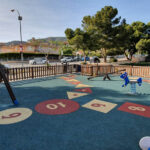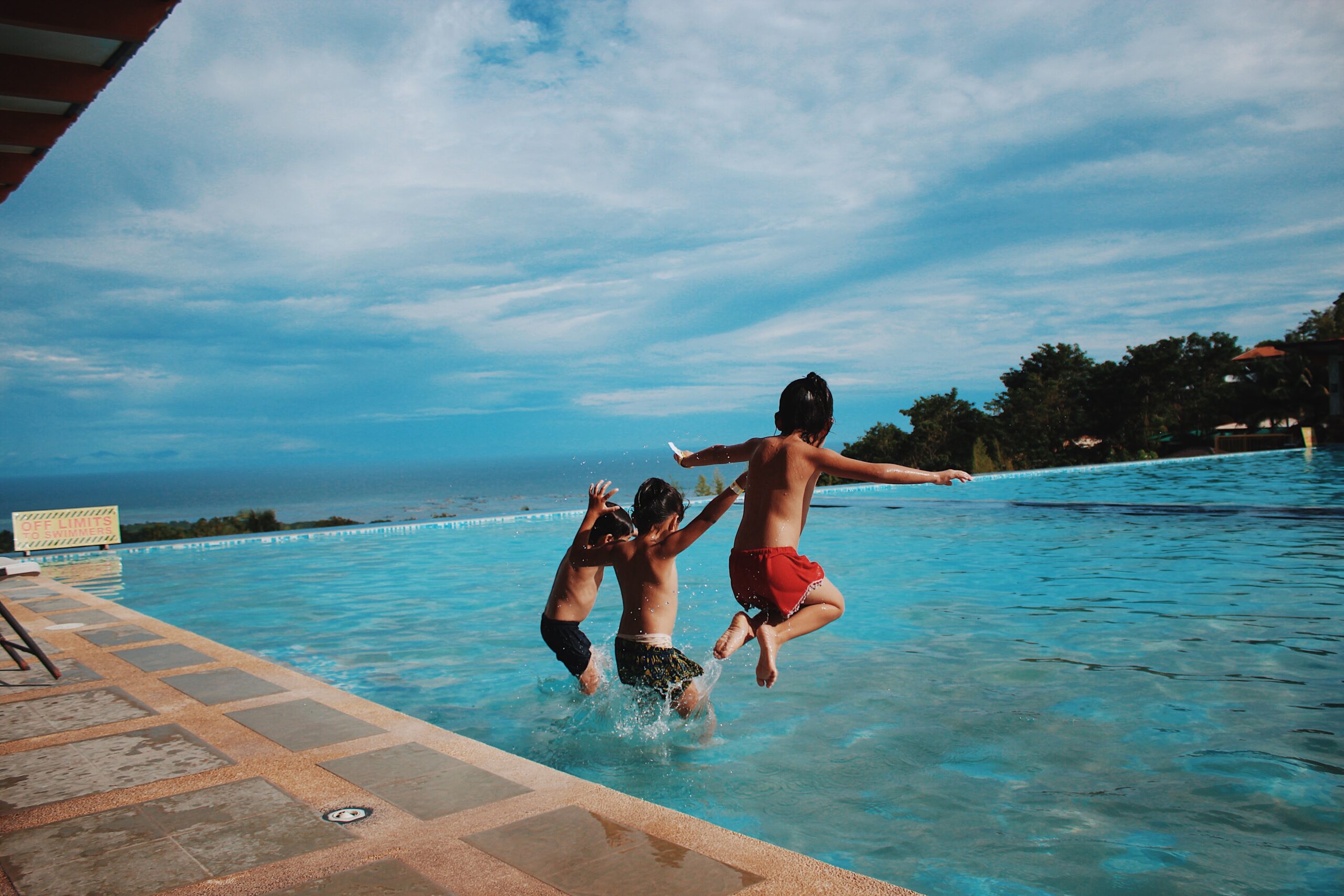
As we slowly head towards summer in Europe, many parents are probably scrambling to get their children into swimming classes so as to be ready for hotel swimming pools and beaches, however you can also teach your child to swim – both as a bonding (trust) experience and being part of your child’s growth. Learning to swim is essential for children because it reduces the danger of drowning. It is an important survival skill that can save a child’s life.
Learning to swim is a significant and exciting milestone for both parents and children. Swimming is not just a fun and pleasurable exercise; it is also a valuable life skill that can help keep your child safe in and around water. Teaching children to swim, on the other hand, can be a daunting endeavor, especially if you are not a confident swimmer yourself.
As a parent, you may be wondering when to start your child on swimming lessons and what measures to take. In this post, we will address these questions and walk you through the topic. We will go over how to teach your child to swim and ensure that they learn this important skill in a safe and pleasurable manner should you decide to do it yourself.
At what age?
First off though as a parent you may be wondering what age to teach your children how to swim. The appropriate age to teach a child to swim is determined by various factors, including the child’s physical and mental development, emotional preparation, exposure to water, and comfort. The rate of development varies between children. If you are looking to get into lessons, then in most regions, swimming lessons can begin as early as three to four years old. However, it is a great experience to also take your baby/toddler earlier then that and get acquainted with water. We will cover a few tips further below for these ages.
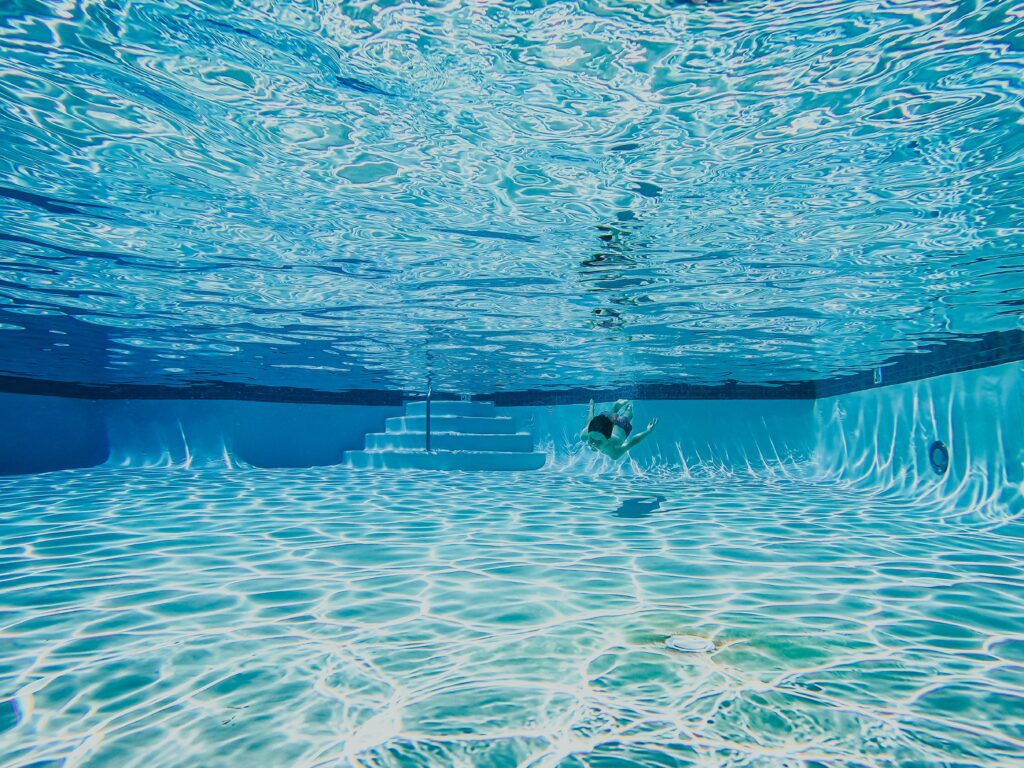
What guidelines to teach to children
The majority of child drownings occur in swimming pools at home. Hence, once your child comes of age, it is important to discuss with them a few guidelines and rules when around or in a pool. Here is our list of guidelines and principles we find parents should teach their children and know themselves:
- Never swim alone: When swimming in a pool, children should always be supervised by an adult. Even if and when they become or are more experienced swimmers, they should be taught to never swim alone. Parents should not leave their children unsupervised around a pool area.
- Learn to recognize drowning signals: Children should be trained to recognize signs of distress, such as waving arms or shouting for aid. They should also be trained to call an adult quickly if they spot someone in distress.
- General pool rules: Children should be taught to respect all pool rules, especially those concerning diving, horseplay, and rushing around the pool.
- Pool depth: Children should be taught to be mindful of the pool’s depth and to never swim in places that are too deep for their swimming skills.
- Exiting the pool safely: Children should be taught how to exit the pool safely by utilizing the ladder or pool stairs.
- Take regular breaks: To avoid tiredness, children should be encouraged to take regular breaks when swimming.
- Learn CPR: For older school children, this may be something that can be done as a family activity as everyone should know the basics because in the event of an emergency, children (and parents) should be taught the fundamentals of CPR.
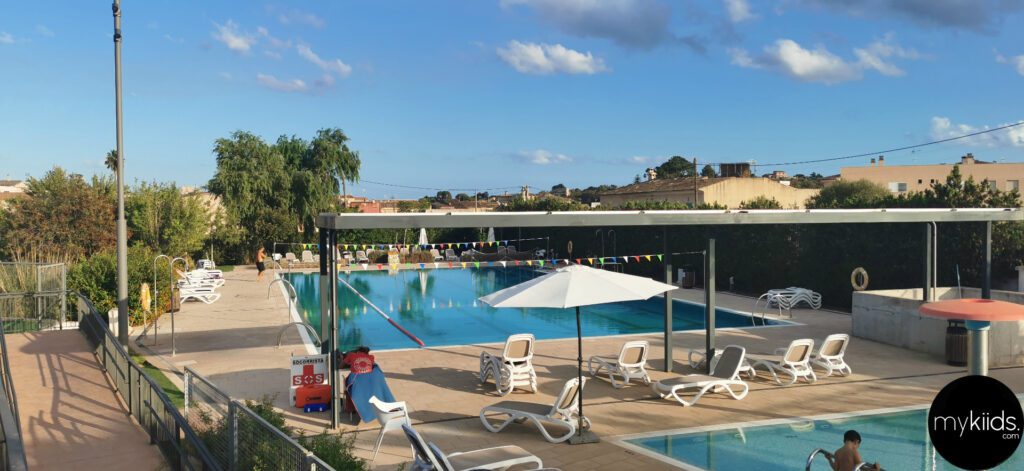
How do we approach and prepare a child for swimming?
Step 1: Begin by becoming acquainted with the water.
It is critical to familiarize your child with water before beginning teaching your child to swim. This can be accomplished by introducing them to a pool or body of water and letting them splash around and become accustomed to the sensation of being in water. You can also introduce younger toddlers to water by using a baby pool or a bathtub. (We will cover age related specifics later in this post).
Step 2: Educate on fundamental water safety guidelines.
Once of age, as mentioned above, it is critical to educate your child on basic water safety guidelines before beginning to teach them to swim. This includes training kids never to swim alone, wear a life jacket while near/in deep water, and to always follow the rules established by a lifeguard or you as a parent. It is also critical to teach your kids how to recognize distress signals, such as waving arms or shouting for aid.
Step 3: Begin with fundamental swimming skills.
When your child is comfortable in the water and understands fundamental water safety, it is appropriate to begin teaching them basic swimming strokes. This includes teaching children how to blow bubbles, kick their legs, and propel themselves through the water with their arms. You can make this procedure fun and engaging for your kids by using games and activities.
- Game ideas: Start with water games in shallow water such as “I Spy”. Your child can be made to sit at the edge of the swimming pool and look for objects around the pool in this activity. Red light, green light is another intriguing game. The green light denotes “kick fast”, the yellow light indicates “kick slow”, and the red light suggests “stop”. The host should call out the light hue, and your child must respond properly. Your child can sit in your lap and play.
Step 4: Progress to more advanced techniques.
It is appropriate to proceed to more complex skills as your child becomes more comfortable in the water and masters basic swimming techniques. This includes teaching children to swim backwards, dive, and tread water. It is critical to proceed at your child’s pace and to always provide encouragement and support.
Step 5: Practice, Practice, Practice is the fifth step.
Practice is the key to teaching your child to swim. The more time your child spends in the water, the more at ease he or she will become and the faster they will learn. Swimming should also be a frequent activity for your child, whether in a community pool, lake, or beach, so that they may continue to practice and improve their skills. However, the best place to start actual swimming is in the pool.
Teaching a child to swim
1 – 2 year olds
A toddler aged 1-2 years must first become accustomed to water. Instead of immediately starting swimming instruction, exposing children to water. Playing games, splashing around, and singing songs can all help children relax. Get into the water with them to assure their safety and enjoyment. Begin explaining safe pool behaviors by demonstrating kids how to securely enter and exit the pool. Kids grasp things quicker than we adults believe they do.
Water safety advice:
- Always keep the baby’s head above the water. While underwater, babies are more prone to consume a lot of water (1). Excessive water consumption may dilute their usual sodium levels, resulting in water intoxication. This can result in convulsions, comas, brain damage, and even death (2).
2 – 3 year olds
It is possible to teach a two-year-old toddler to kick their legs and paddle their feet under water. Hold them above the water and encourage them to kick as hard as they can in both the front and back. Teach them how to float on their stomach and back with support. Toddlers can be afraid of water on their faces, so teach them how to blow bubbles underwater. Add floating toys to the water and have the child reach for them to improve arm movement.
Water safety advice:
- Toddlers at this age are naturally inquisitive and may wander away from their parents to explore the water on their own. As a result, if there is water nearby, it is critical to keep a continual check on them. While observing your child, refrain from engaging in any other activity that may distract you (3). Just concentrate on them.
- Floating toys, rafts, or water wings may not provide adequate protection. Life jackets are a great way for children to be in a bit deeper water with you. Also, wear a life jacket if your child is on a boat, inner tube, raft.
- Instill in them that they can only enter the water if they are accompanied by you. They should be trained not to run near a pool or other body of water.
- If you have a home pool, then toys should not be left laying around the pool and pool area when the pool is not in use (3). If the toy is left in the pool, toddlers may be tempted to go there and retrieve it.
- When attending a social event, such as a party or a picnic, keep an eye out for your kids who are in or near water. Actually, all of the parents can take turns becoming “water watchers.” (3)
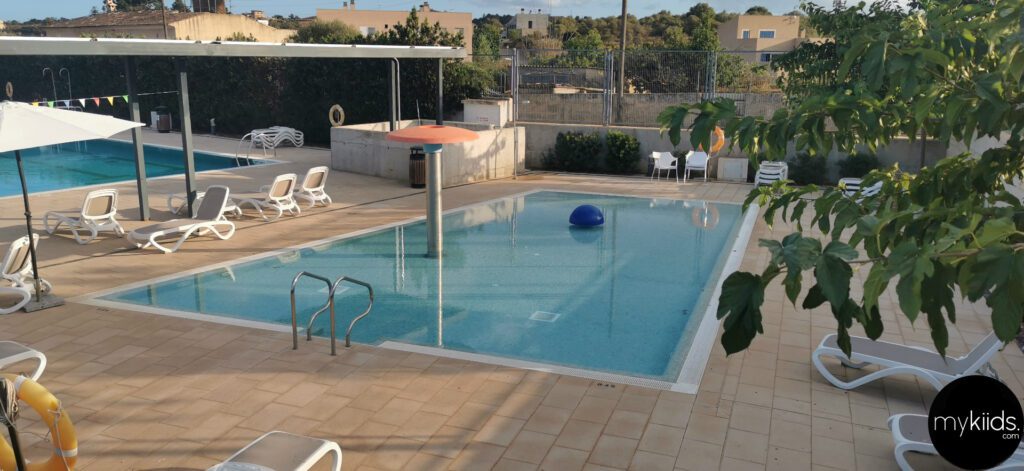
4 – 5 year olds
Children begin to listen and obey directions around the age of four. They can also recall what they have learned. All of these characteristics are ideal for beginning regular swim training. When finalizing the class, ensure that your child has skilled swim teachers and a proper assessment system in place. You should be able to see the first one or two classes to assess the swimming sessions and safety precautions.
Once they begin training, they will be able to get into the swimming position from a standing position and submerge their heads for a few seconds. A four-year-old child can learn fundamental swimming skills like gliding in the water, floating, and reaching the exit. Leg and arm motions can really be developed progressively at this age.
Water safety advice:
- Even if a lifeguard is there, another individual should be present to supervise. At least one guardian should always be at an arm’s length of the child.
- While learning to swim, not all children progress at the same rate. Your child may take longer than others, and they may have terrible days as well. A few small children may be scared. Don’t push them or get irritated with them. Allow them to take their time. Be patient and supportive. (4)
6 years and older
At this age, endurance improves. Children as young as six years old can learn to front crawl. They can also hold their breath underwater for extended periods of time and master new swimming styles. You may pair them with swimming skills such as retrieving an object from the pool’s bottom or leaping in and getting out unaided.
Water safety advice:
- Even if your child has already learned to swim, physical supervision is required. However, you are not required to enter the water with them for added safety.
- Children who learn to swim may want to try diving. Emphasize the necessity of diving only with an adult present and only in deep water.
- When participating in water-based activities such as water skiing, rafting, or boating, children should wear a life jacket.
- Swimming in a pool is not the same as swimming in open water. As a result, even if your children knows how to swim, you must exercise extreme caution while putting them to open bodies of water such as lakes or beaches. Here are a few additional tips for being at the beach with your child.
To summarize, training your child to swim is a critical and rewarding task. You may ensure that your child learns to swim in a safe and pleasurable manner by following the steps suggested in this post. Remember to begin with water familiarization, teaching basic water safety regulations, beginning with basic swimming strokes, progressing to more advanced ones, and practicing, practicing, practicing. Furthermore, be present to support and encourage your child throughout the process.
Key Points
- When children are physically and emotionally ready, they can begin swimming classes.
- To ensure safety, keep an eye on your child while he or she is swimming and put safety equipment and a fence around the pool if at home.
- Allow children to explore the water on their own, provide them interesting swimming suits, or play engaging activities to make swimming more enjoyable.
- When teaching swimming lessons to children, always keep their age in mind.
Footnotes
- “Swimming lessons for infants and toddlers“. NIH. Feb 2003.
- “Water Intoxication in Infants.” St. Louis Childrens Hospital.
- “Water saftey for children birth to 5 years.” Seattle Childrens Hospital. 2019.
- Claire McCarthy, MD. “Swimming lessons save lives: What parents should know.” May 6, 2022.




